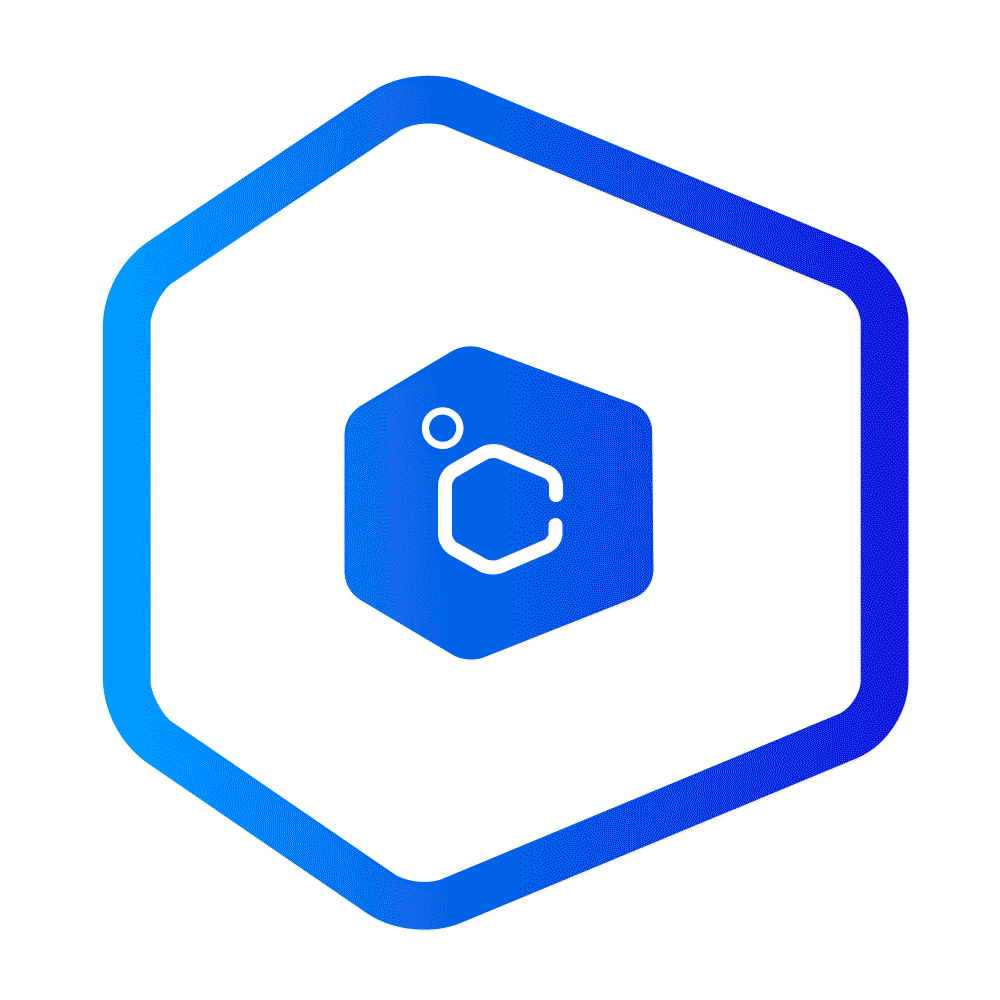
High Energy Density Technology
Exceeding Limitations
Battery cell energy density: 330 Wh/kg
With highly integrated structure design, the groundbreaking CTP (cell to pack) technology has significantly increased the volumetric utilization efficiency of the battery pack, which has increased from 55% for the first-generation CTP battery to 72% for the third generation, or Qilin battery. The energy density of NMC Qilin battery can reach 255Wh/kg, while that of LFP one amounts to 160Wh/kg.
Cell to chassis (CTC) technology integrates the battery cell with the vehicle body, chassis, electric drive, thermal management as well as various high and low voltage control modules, extending driving range to over 1,000 km. It also optimizes power distribution and reduces power consumption to less than 12 kWh per 100 km.
CATL's leading material system of high-nickel 811, together with the industry pioneering Nano-rivet technology, offer structural reinforcement and protection at the cell level. It greatly improves energy density and effectively balances high-standard safety and reliability.
With the accurate design of single-crystal particles plus anti-oxidation electrolytes, the possibility of the voltage is constantly expanded, and more active lithium is liberated, finally significantly improving the energy density and realizing the best cost performance.

Long Life Technology
Commitment that can Stand the Tests of Time
Service life can reach 16 years or 2 million km
CATL's low-lithium consumption technology can greatly reduce the consumption of active lithium content during the usage of a cell and significantly improve the stability of anode material surface and structure. It is critical for satisfying the performance requirement of an ultra-long life.
By using FIC coating technology on cathodes, a self-dormant passivation interface is developed to reduce the activity of lithium ions during storage and reactivate the ions when the battery is used. The side reactions on the cathode could be massively reduced during cycles and storage.
This kind of electrolyte automatically repairs SEI to ensure SEI's integrity and stability. Its self-adaptive protection ability can further improve the cycling and storage performance of battery cells.
Through the electrode sheet level's creative design, the "ion and electron high-speed channel" is constructed to reduce the diffusion resistance of lithium-ion and slow down the lithium battery capacity attenuation.
Flexible expansive force management technology is introduced to realize the cell's expansive force adaptive management, and to ensure the expansive force is always in an optimal environment, and finally helps to prolong battery service life.
Electrolyte enrichment and gas release are carried out at different operation stages to slow down the damping of cell capacity and extend its service life, finally realizing greater value.

Super-fast Charging Technology
An Inch of Time for An Inch of Gold
Charging to 80% capacity in five minutes
An electronic network connected every direction is built on the surface of the fully Nano-crystallized material, greatly increases the response speed of the cathode material to charging signals and the extraction rate of lithium ions.
The surface of the anode material modified with a porous coating layer provides abundant active sites required for lithium ion exchange, which greatly improves the charge transfer rate and intercalation rate of lithium ions.
By introducing isotropic technology, lithium ions can be inserted into the graphite channel from any angle, which in turn greatly increases the charging speed.
The transmission speed of lithium ions in liquid and interfaces is significantly increased by adopting superconducting electrolytes, greatly boosting the battery's charging speed.
This innovative high porosity separator is able to effectively shorten the average transmission distance and lower the transmission resistance of lithium ions, allowing them to move freely between the anode and cathode.
By adjusting the gradient distribution of the electrode's porous structure, CATL creates a high-porosity structure in the upper layer and a compacted structure in the lower layer of the electrode, ensuring both high-energy density and super-fast charging.
This multi-dimensional battery tab technology significantly increases the current-carrying capacity of electrodes, solving the key problem that temperatures rise too high in cells during 500A direct charging.
By monitoring anode potential, the charging current can be adjusted in real time to prevent lithium ion plating to enable the fastest charging.

Authentic Safety Technology
Makes Every Trip Safe and Sound
Four-dimensional safety protection, giving batteries aircraft-level safety
The high-throughput screening of the "material gene pool" is conducted to target certain metal elements for mixing with transition metals, such as nickel and cobalt. It improves the thermostability of NMC chemistry by lowering possibility of oxygen release while guarantee the energy density.
The unique advanced Nano-coating technology forms a stable and compact solid electrolyte interface membrane on the surfaces of the electrode, greatly lowering the reactivity of the material and electrolytes, and significantly improving the thermostability of the cell.
Starting from the electrolyte, one of the four major components in batteries, CATL has developed a number of functional additives that can modify the electrolyte “genes,” reduce the heat generated from reactions between solid and liquid interfaces, and finally improve the temperature resistance and thermal safety of a battery.
CATL develops the self-stabilizing battery system with gas-electric separation and active isolation, to achieve both high efficiency integration and high safety of high energy density batteries, which is compatible with all chemical systems and voltage platforms.
The early warning model of parametric fault and risk developed on the basis of big data ensures a timely response of the battery system in extreme circumstances. It automatically lets the vehicle initiate a cooling strategy, and diagnose and solve problems quickly.
Analyzes, excavates, and extracts the deep features of data to summarize internal relations among characteristic variables, and combined with signal testing and transmission technology, builds a fault real-time testing system that provides early warnings about battery faults, identifying each and every abnormality.

Automatic Temperature Control Technology
After 15 Minutes of Charging, Ready to Drive in Snow
The battery is able to warm up 6°C per minute
Creating a weak short circuit between the battery and electric motor by adjusting the electric motor control, the battery is quickly warmed up by the pulse current that forms in the high voltage loop. It saves up to 2/3 of the heating time compared with the conventional approach.
Self-heating technology ensures that the cell heats up evenly to the greatest extent. It can overcome the uneven heating of the cell by conventional heating that uses a regular heating film.
CATL has developed a set of algorithms for a quick correction which can accurately predict the state of a cell within 1 minute and maintain the SOC error rate within ±3%.
This industry's very first power compensation technology offers a stable discharge platform under extreme circumstances such as low temperature and low SOC, and to prolong the battery life by elevating the power.
The customized anode material can guarantee the quick exchange of lithium ions in the anode interface. The self-adaptive ion transmission channel shortens the transmission path of lithium ions in the anode. Both of the two features realize excellent low temperature performance of the battery.
The high-activity cathode material gives lithium ions the ability to move quickly and adapt to all-weather usage scenarios. It can cope even if the weather is freezing.
The low-viscosity electrolytes can increase the conduction speed of the lithium ions. This ensures that the lithium ions and the vehicle itself can move freely even in extreme environments.

Smart Management Technology
Let Your Battery Know You Better than You Do
24-hour full life cycle comprehensive monitoring
Combined with the cell failure mechanism model, it monitors all cells in real-time and stores all data within the battery cell life cycle, such as charge and discharge data. The data can be used to analyze the health status of cells and to identify abnormal cells in advance.
Based on the intelligent BMS fast-charging strategy, as well as the accurate recognition of temperature and SOC, the battery can be charged quickly within the healthy charging zone while being protected from any relevant damage.
Based on big data, a high-precision battery model is established to accurately predict the status of each cell based on its real-time status and operating state, thereby preventing power or mileage drop suddently and quickly.
An intelligent algorithm with multi-scenario, multi-model, and high-precision features is used to achieve efficient and dynamic balance of the mix and match battery system, which complements the advantages of different chemical systems, and improves the overall performance of the battery system.
Wireless communication within the pack can simplify the sample harness and pack assembly, lower the cost, improve reliability and realize 24-hour real-time monitoring.
By coupling the battery model and aging model, estimating the aging parameters of each cell, and collecting information of aging materials, the aging state of a cell can be assess and to assess its remaining life can be predicted accurately.
With a big data cloud service and vehicle-mounted high-performance BMS edge computing, as well as vehicle-cloud collaboration, a more comprehensive diagnosis and more humanized battery management can be realized.
New energy vehicles can be turned into distributed energy storage units that can participate in the power grid's peak load shifting and earn profit. Your car can become a backup power source and a tool that makes money for your family.
By clicking on the button “I accept” or by further usage of this website you express consent with usage of cookies as well as you grant us the permission to collect and process personal data about your activity on this website. Such information are used to determine personalised content and display of the relevant advertisement on social networks and other websites. More information about personal data processing can be found on this link. Read More


